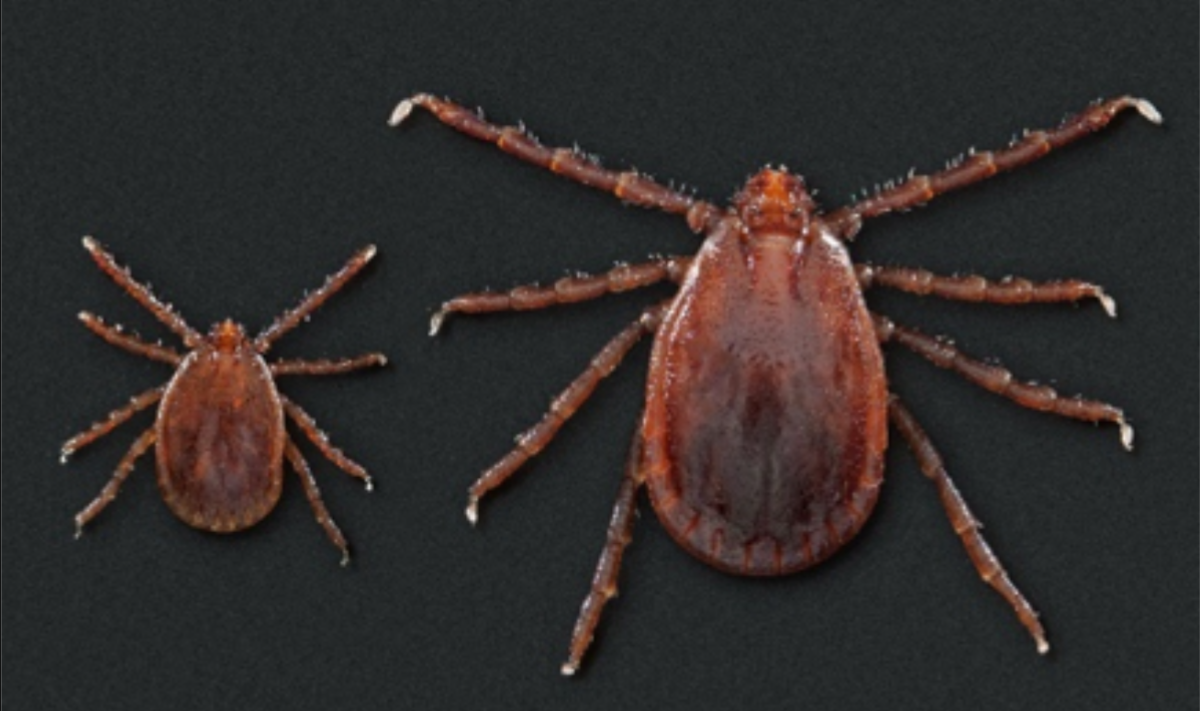An invasive species of tick is creeping its way across the eastern U.S., killing livestock in its wake as it travels west.
These Asian longhorned ticks, which were only found in the U.S. for the first time in 2017, have now been discovered on pets, livestock, wildlife, and people across 19 U.S. states, according to a Centers for Disease Control and Prevention (CDC) warning.
The invasive ticks were even found to be responsible for the deaths of three cows in Ohio, having bitten them thousands of times to the point that the cows died of blood loss, a recent paper in the Journal of Medical Entomology revealed.
James Gathany, CDC
As of April 13, 2023, longhorned ticks have been found in Arkansas, Connecticut, Delaware, Georgia, Indiana, Kentucky, Maryland, Massachusetts, Missouri, New Jersey, New York, North Carolina, Ohio, Pennsylvania, Rhode Island, South Carolina, Tennessee, Virginia, and West Virginia.
“Asian longhorned tick was discovered in New Jersey in the fall of 2017 on a sheep farm in NJ which put researchers on alert and had us rechecking our collections as they look very similar to our native rabbit ticks. I had actually collected one in NY earlier in 2017 which was misidentified. One was discovered in a West Virginia collection dating back to 2010,” Joellen Lampman, an integrated pest management extension support specialist at Cornell University, told Newsweek. “By the end of 2018 they were known to be in 10 states, including North Carolina. They are now known to be in 19 states.”
These ticks are native to East Asia, including China, Japan, eastern Russia and Korea. Scientists aren’t yet sure how the tick entered the U.S., but estimate that it likely arrived in or before 2010, according to the USDA. Thousands of these ticks may be found living in grasslands or on animals, with researchers still trying to figure out if they prefer wooded or open areas.
“Through genetic testing, it is believed that these ticks were introduced to the United States at least five times, on people, pets, or livestock, and likely from countries where they are also invasive, Australia and New Zealand,” Lampman said.
“Why it took so long to start ramping up their numbers has yet to be determined. They are a good candidate for invasiveness as outside of their native range females are parthenogenic, a fancy word for reproducing without a male. If a single tick is dropped off by, say a migrating bird, a new population can become established. She basically clones herself, laying up to 2,000 eggs, which are all females. As long as they get their three bloodmeals, each hatched tick can lay up to 2,000 eggs.”
The Journal of Medical Entomology paper investigated the 2021 Ohio cow deaths, which marked the first recorded occurrence of the tick in Ohio. The researchers from Ohio State University investigated the pasture, finding 9,287 ticks in only 90 minutes, and tested 100 of the adult female ticks for diseases.
“Eight field-collected ticks were positive for Anaplasma phagocytophilum; no other infectious agents were detected,” the authors wrote in the paper, concluding that the cattle had not died from a tick-borne disease but rather blood loss.
Anaplasma phagocytophilium can cause the disease anaplasmosis in humans, and lead to symptoms including fever, headache, chills, and muscle aches. Anaplasmosis has a fatality rate of under 1 percent, according to the CDC. It is still unclear if Asian longhorn ticks can spread disease to humans, and they appear to be less attracted to human skin compared to other tick species in the U.S.
“Fortunately, they do not seem to care for the taste of people, although there are reports of human bites. They are very fond of livestock and in both North Carolina and Ohio their sheer numbers feeding have bled cows to death,” Lampman said. “They are also known to carry and transmit Theileria orientalis, a cattle disease. They have been shown in lab studies to be able to vector Rocky Mountain spotted fever, Heartland virus, and Powassan virus. No tested collected ticks have been carrying these diseases.”

CDC
To protect yourself from any potential tick bites, the CDC recommends using EPA-approved insect repellents and 0.5 percent permethrin-treated clothing.
“Permethrin is a highly effective acaricide that can provide additional protection,” Peter Krause, a senior research scientist in epidemiology at Yale School of Public Health and Yale School of Medicine, previously told Newsweek. “Permethrin repellent can be applied to, or impregnated in, clothing and shoes.”
Do you have a tip on a science story that Newsweek should be covering? Do you have a question about Asian longhorned ticks? Let us know via [email protected].
Uncommon Knowledge
Newsweek is committed to challenging conventional wisdom and finding connections in the search for common ground.
Newsweek is committed to challenging conventional wisdom and finding connections in the search for common ground.


